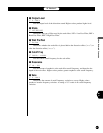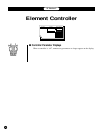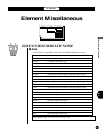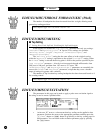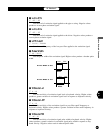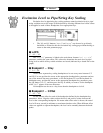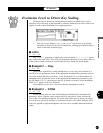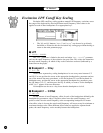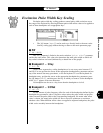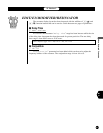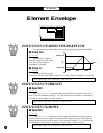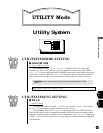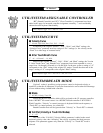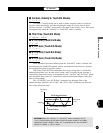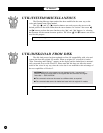
VL Version 2
49
4. New Features & Parameters
EDIT
Excitation Pulse Width Key Scaling
Excitation pulse width key scaling produces natural pulse width variations across
the range of the keyboard by allowing different pulse width offset values to be applied to
each of three breakpoints set at appropriate keys.
• The § button (“Bpag”) can be used to go directly back to the next excita-
tion key scaling page without having to return to the main parameter page.
●
PW
¯ 0.0 … 99.2 %.
The “PW” parameter is linked to the main excitation “pulse width” parameter,
and has the same effect. This value also determines the main pulse width on which all
key-scaled variations are based (indicated by a dotted line on the graph).
●
Breakpoint 1 … 3 Key
¯ C-2 … G8.
Allows three separate key scaling breakpoints to be set at any notes between C-2
and G8. You can position the cursor at the appropriate breakpoint key parameter and use
any of the normal data entry procedures, or use the keyboard. To use the keyboard for
breakpoint entry, position the cursor at the appropriate breakpoint key parameter, press
the • button (“Kbd”), and then press the key at which you want to set the breakpoint
while “Kbd” appears in inverse characters.
No breakpoint can be set to a key lower than the breakpoint to its left.
●
Breakpoint 1 … 3 Offset
¯ -64 … 63.
Set the amount of pulse frequency offset for each of the breakpoints defined by the
breakpoint key parameters, above. Negative values reduce the pulse width, and positive
values increase the pulse width at the corresponding breakpoint. No matter what offset
value is chosen, the actual pulse width will never exceed its minimum or maximum
absolute value. When different offset values are applied to adjacent breakpoints, the pulse
width varies smoothly between the breakpoints.



